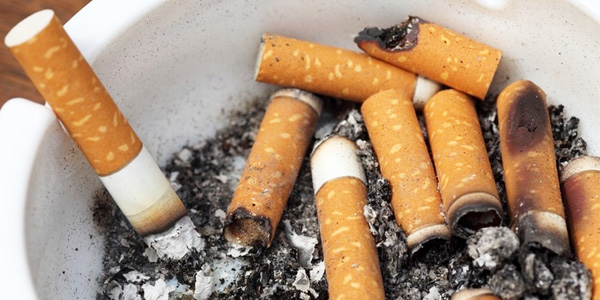Active Agent
Nicotine is a highly addictive powerful stimulant alkaloid which naturally occurs in the tobacco leaf.
Effects
The effects of nicotine include relief of fatigue, suppression of appetite, increased heart rate, and increased blood pressure. Nicotine use also relieves the craving of the nicotine addicted which typically occurs about 30 minutes after each cigarette use. In the nicotine addicted, raising nicotine levels produces a calming effect and can improve performance on some tasks. After chronic use cigarettes cause destruction of alveoli in the lungs (emphysema), bronchitis (inflammation of bronchial walls), bronchiectasis (sacular enlargements of infected bronchi), ulcers, and lung cancer. Exposure to tobacco is also associated with an increased risk of heart attack, peripheral vascular disease (narrowing & occlusion of arteries), as well as increased risk of several other cancers including oral cancer, esophageal cancer and bladder cancer. First time users may feel dizziness and nausea. Pregnant smokers deliver lower birth-weight babies. Withdrawal from tobacco or decreased nicotine use is associated with headaches, mood changes, decreased heart rate, decreased blood pressure, irritability, anxiety, depression, weight gain, depression, and disruption of sleeping patterns.
Addiction Potential
Physical – High. Psychological – High.
Method of Use
Nicotine is most typically consumed by smoking. After smoking nicotine is absorbed directly from the lungs and travels through the blood with significant effect on the brain. Chewing tobacco allows for oral mucosal absorption of nicotine. Snuff is a ground tobacco which can be snorted. Cigars and pipes are also nicotine delivery devices, although blood levels from their use are generally less than that from cigarette use.
Pros
Appetite suppressant. Smokers may think they are cool. Recent data indicates that 13 % of middle school and 35% of high school students use some form of tobacco (cigarettes, smokeless, cigars, pipes, bidis, or kreteks).
Cons
Highly addictive and leads to lots of health problems. Expensive. Lots of non-smokers won’t date smokers. Many employers will avoid hiring smokers. Bad breath. Yellows teeth.
Quitting
A multifactorial program including counseling and nicotine replacement aids may be more effective than each method in isolation. Nicotine patches have a good short term success rate, but long term efficacy of nicotine patches for quitting smoking may be as low as 18 percent. Nicotine gums are also available as are nicotine inhalers which look like cigarettes and small premium vaporizers.


Comments are closed.